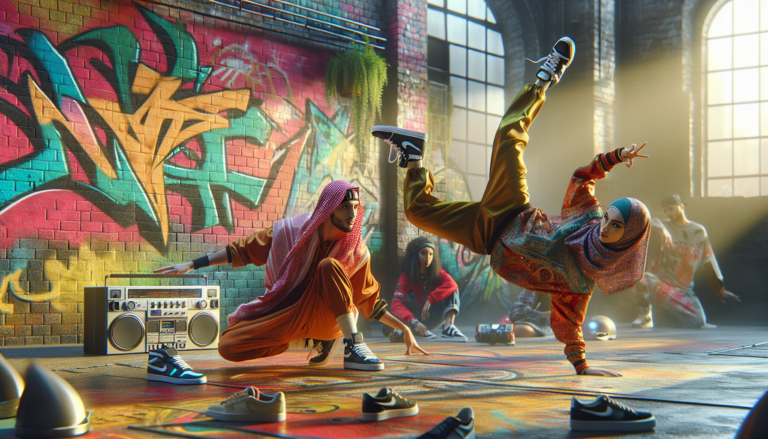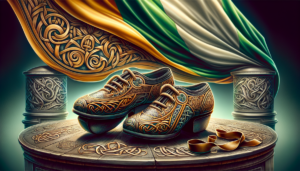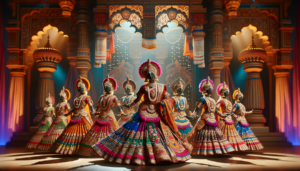Introduction to Breakdance
Breakdance, also known as B-Boying, is a dynamic and highly athletic street dance style that originated in the 1970s. Born in the Bronx, New York City, as part of the burgeoning hip-hop culture, breakdance quickly gained popularity worldwide, captivating audiences with its explosive moves and raw energy. Today, breakdance has evolved into a global phenomenon, with dancers pushing the boundaries of creativity and physicality in competitions and performances around the world.
What is Breakdance?
At its core, breakdance is a fusion of various dance styles, including funk, soul, and salsa, combined with acrobatic moves and freezes. B-Boys and B-Girls, as breakdancers are called, use their entire bodies to express themselves, incorporating intricate footwork, powerful spins, and gravity-defying freezes into their routines. The dance is typically performed to hip-hop music, with DJs providing the beats and MCs hyping up the crowd.
History of Breakdance
Breakdance emerged in the early 1970s in the Bronx, a borough of New York City, as part of the larger hip-hop culture that included graffiti art, DJing, and MCing. The dance style was initially performed at block parties and on the streets, with dancers battling each other to showcase their skills and creativity. As the popularity of breakdance grew, it spread to other parts of the United States and eventually to the rest of the world, becoming a global phenomenon by the 1980s.
Fundamental Breakdance Moves
To become a skilled B-Boy or B-Girl, it is essential to master the fundamental breakdance moves. These moves form the foundation of any breakdancer’s repertoire and are crucial for developing style, creativity, and confidence on the dance floor.
Top Rock
Top Rock is the standing portion of a breakdance routine, typically performed at the beginning of a set. It involves rhythmic steps, kicks, and turns, often incorporating elements of other dance styles like salsa or house. Top Rock is an opportunity for dancers to showcase their musicality and style before transitioning to the floor.
Footwork
Footwork is a series of intricate steps and movements performed on the ground, often in a crouched or kneeling position. These moves require quick feet, agility, and precise timing. Some common footwork moves include the 6-step, 3-step, and CC, each with its own unique variations and combinations.
Freezes
Freezes are poses or positions that a dancer holds for a moment, often at the end of a set or as a transition between moves. These can range from simple poses to more complex, acrobatic stances that require strength, balance, and flexibility. Some popular freezes include the baby freeze, chair freeze, and handstand freeze.
Power Moves
Power moves are the most dynamic and explosive elements of breakdance, involving acrobatic spins, flips, and rotations. These moves require a combination of strength, agility, and body control, and are often the highlight of a breakdance routine. Some well-known power moves include the windmill, flare, and head spin. It’s important to note that proper technique and safety precautions are essential when attempting these advanced moves.
Breakdance Competitions
Breakdance competitions, also known as battles, are events where B-Boys and B-Girls showcase their skills and compete against each other for prizes and recognition. These competitions can range from local, grassroots events to major international tournaments attracting the world’s best dancers.
Famous Breakdance Battles
One of the most prestigious breakdance competitions is the Chelles Battle Pro, held annually in France. The 2014 final featured an epic showdown between Team Rhônes Alpes and Gamblerz, two of the world’s top breakdance crews. With over 36 million views on YouTube, this battle highlights the global appeal and excitement of competitive breakdancing.
Olympic Breakdancing
In a historic move, breaking has been added as an official medal event for the Paris 2024 Olympics. This inclusion marks a significant milestone for the dance style and is expected to further increase its popularity and recognition worldwide. The Olympic breaking competition will feature 16 B-Boys and 16 B-Girls competing in solo battles, showcasing their skills, creativity, and athleticism on a global stage.
Learning Breakdance
Whether you’re a complete beginner or have some dance experience, learning breakdance can be a fun and rewarding journey. With dedication, practice, and the right guidance, anyone can develop the skills and confidence to become a B-Boy or B-Girl.
Breakdance Tutorials
There are numerous resources available online for those looking to learn breakdance, including video tutorials, instructional articles, and virtual classes. One popular tutorial is “How To Breakdance For Beginners,” a comprehensive video guide that covers the basics of Top Rock, footwork, and freezes. With over 2.3 million views since its release in 2012, this tutorial has helped countless aspiring dancers take their first steps in the world of breakdance.
Tips for Beginners
When starting your breakdance journey, it’s essential to focus on the fundamentals and develop a strong foundation. Begin by mastering basic Top Rock steps and footwork patterns, gradually incorporating more advanced moves and combinations as you progress. Regular stretching and strength training can help improve your flexibility, endurance, and overall performance. Most importantly, remember to have fun, express yourself, and enjoy the process of learning and growing as a dancer.
| Beginner Tips |
|---|
| 1. Start with the basics: Top Rock and footwork |
| 2. Practice regularly and be patient with your progress |
| 3. Stretch and exercise to improve flexibility and strength |
| 4. Learn from experienced dancers and attend workshops |
| 5. Develop your own style and express yourself through the dance |
Breakdance Culture
Breakdance is more than just a dance style; it is a vibrant culture with its own language, customs, and values. Understanding and appreciating the cultural aspects of breakdance is essential for anyone looking to fully immerse themselves in the art form.
Role of DJs and MCs
DJs and MCs play a crucial role in the breakdance scene, providing the music and energy that fuels the dancers. DJs create the beats and rhythms that inspire B-Boys and B-Girls to push their limits and express themselves through movement. MCs, or Masters of Ceremonies, hype up the crowd, introduce the dancers, and help create the electric atmosphere that defines breakdance events.
Global Influence of Breakdance
Since its humble beginnings in the Bronx, breakdance has evolved into a global phenomenon, influencing fashion, music, and popular culture around the world. From the United States to Europe, Asia, and beyond, B-Boys and B-Girls have embraced the art form, adding their own unique flavors and styles to the mix. This global exchange of ideas and techniques has helped to keep breakdance fresh, innovative, and relevant, even as it approaches its 50th anniversary.
In conclusion, breakdance is a dynamic and ever-evolving art form that continues to captivate and inspire people around the world. Whether you’re a seasoned B-Boy or B-Girl, or just starting your journey, the world of breakdance offers endless opportunities for self-expression, creativity, and growth. So put on your dancing shoes, hit the floor, and let the rhythm guide you as you explore the exciting and transformative art of breakdance.






